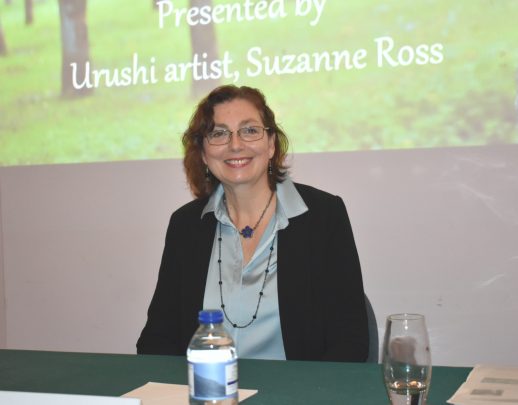 Talk
TalkFriday 23 November 2018
6:00pm – 7:00pm
The Wonders of Urushi
Drinks reception: 7:00pm – 8:00pm
13/14 Cornwall Terrace, Outer Circle (entrance facing Regent's Park), London NW1 4QP
Organised by the Daiwa Anglo-Japanese Foundation
Fully bookedUrushi, the precious sap of the urushi tree which is indigenous to south-east Asia and from which all authentic lacquerware is made, has been used in Japan since ancient times. Its unique properties were discovered more than 9,200 years ago by the Jomon people who used it not only as an adhesive and for waterproofing, but also as a decorative material for their costumes and utensils. Since that time, urushi has always been a practical necessity for Japanese society but with the advances of technology in modern society, urushi has been outstripped of its usefulness.
In this talk, Suzanne Ross discussed the roots of Japanese urushi culture. She explained how this exotic material is extracted, the processes involved in producing lacquerware and about the grave dangers that face urushi and all traditional arts. The enduring beauty and elegance of urushi will always be strongly attached to the Japanese identity and their heritage belongs not only to the Japanese people but to mankind; such a cultural asset needs to be preserved and cultivated for future generations.
Listing image courtesy of Suzanne Ross
About the contributors

Suzanne Ross
Suzanne Ross is the director of the Ross Studios Gallery of urushi in Wajima, Ishikawa Prefecture. Suzanne was first captivated by urushi while an art student in London. She travelled to Japan in 1984 with the aim of studying Japanese lacquer art; since then she has devoted decades to studying, making work with and becoming a teacher and advocate of this material. She trained in Ishikawa prefecture with several masters of the form who are recognized as Living National Treasures. Her work has won awards and been featured in exhibitions at major institutions both within Japan and abroad. She has also given guest lectures and workshops at various universities, corporations and museums, including the Metropolitan Museum of Art, New York.